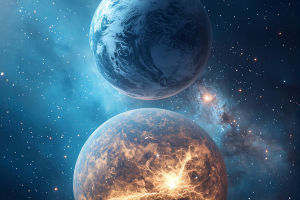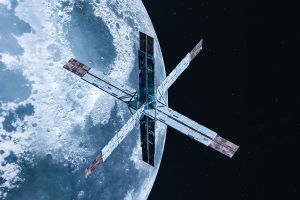The intricate dance of planets around their stars is a captivating astronomical phenomenon governed by precise physical laws and subtle cosmic influences.
Unlike a simple, uniform motion, planetary orbits present a dynamic and complex interplay of gravitational forces, orbital shapes, and timing that have fascinated scientists for centuries.
By unraveling these orbital mysteries, one gains insight not only into the movement of planets in our own solar system but also into the mechanics shaping countless other planetary systems in the universe.
The Foundations of Planetary Orbits
Planetary orbits follow specific trajectories, predominantly elliptical in shape, first quantitatively described by Johannes Kepler in the early 17th century. His three laws of planetary motion laid the groundwork for understanding how planets revolve around a star:
- Orbits are ellipses with the star positioned at one of the foci.
- A line joining the planet and the star sweeps out equal areas during equal time intervals. This means that planets move faster when closer to the star and slower when farther away.
- The square of a planet’s orbital period is proportional to the cube of the average distance from the star.
Kepler’s laws, although empirical at the time, find theoretical foundation in Newton’s law of universal gravitation, which posits that gravitational attraction between two bodies depends on their masses and the inverse square of their separation distance. This relationship ensures that planets remain bound in stable orbits unless influenced by external forces or collisions.
Elliptical Orbits and Orbital Variation
Unlike the simplistic notion of circular orbits, real planetary paths are ellipses with varying eccentricities—some quite close to circular, others more elongated. This ellipticity affects orbital velocity significantly. A planet moves fastest at its perihelion, its closest approach to the star, and slowest at aphelion, the farthest point. This varying speed governs climate cycles on planets like Earth and influences potential habitability.
One intriguing aspect is the way gravitational tug from other planets induces perturbations in an orbit, sometimes causing subtle but measurable changes in eccentricity, inclination, and orbital precession over long time-frames. These interplanetary interactions form a gravitational ballet, where even small influences can accumulate to generate observable orbital shifts.
Resonances: Cosmic Rhythms in the Orbital Dance
Among the most fascinating orbital phenomena are resonances—situations where the orbital periods of two or more bodies are related by simple ratios, such as 2:1 or 3:2. Resonances exert a stabilizing effect, locking planets into gravitationally coupled rhythms. For instance, Jupiter’s moons Io, Europa, and Ganymede are caught in a 4:2:1 resonance, a configuration that shapes their geological activity due to tidal heating.
The Role of Gravity and Orbital Velocity
Planets orbit their stars by balancing gravitational pull and centrifugal force resulting from their motion. If a planet moves too slowly, gravity pulls it inward, causing a spiral toward the star. If it moves too fast, centrifugal force can propel it outward into a new orbit or even escape velocity.
Orbital velocity depends on both the mass of the central star and the planet’s distance from it. Closer planets travel faster due to stronger gravitational attraction, while distant ones move slower, taking longer to complete an orbit. This interplay shapes the architecture of planetary systems, dictating the spacing and diversity of planetary orbits.
Orbital Inclination and Precession
Planets do not all orbit in the exact same plane. Orbital inclination measures the tilt of a planet’s orbit relative to a reference plane, often the star’s equator or another planet’s orbital plane. Over time, gravitational interactions cause slow rotation (precession) of the entire orbit’s orientation in space, altering the direction of the orbital plane.
These effects can have significant climatic and environmental consequences, as seen in Earth's Milankovitch cycles, which correlate orbital changes with ice age cycles. Precession also complicates spacecraft navigation and satellite deployment, requiring careful adjustment and planning.
Astronomer and physicist Douglas S. Leonard emphasizes the importance of orbital mechanics in understanding planetary behavior: “The precise motion of planets is not random but governed by deep physical laws that manifest in elegant and predictable patterns. Decoding these motions unlocks our understanding of planetary formation and stability”—which can be found supported by his contributions to astrophysical research.
Similarly, planetary scientist Sara Seager notes: “Orbital dynamics form the backbone of exoplanet discovery and characterization. Without grasping the nuances of orbital motion, we’d be unable to discern the multitude of worlds beyond our solar system".
The dance of the planets is an orchestrated symphony ruled by gravitation and motion, whose subtleties reveal the workings of cosmic order. Understanding the elliptical nature of orbits, the impact of resonances, and the continuous gravitational interactions among bodies offers profound insights into planetary origins, system stability, and potential for life.


